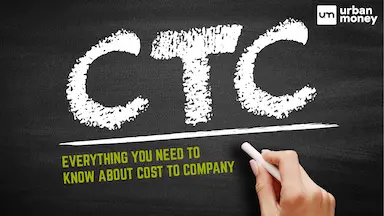- Home
- Personal Loan
- Personal Loan Balance Transfer
Personal Loan Balance Transfer
Are you unhappy with the interest rates and terms of your current personal loan? If yes, you might find this guide informative. A personal loan balance transfer is a facility that enables you to switch your unfavourable loan to a better one with a new lender. Typically, transferring your existing loan can lead to a lower interest rate and longer tenure, which helps reduce your EMI amount and save more on interest payments. However, before making any decision, it’s important to be aware of certain aspects. These include the eligibility criteria, required documents, applicable fees, and other relevant details about personal loan transfers. Continue scrolling down to learn more.
- Personalized Personal Loan solutions
- Expert guidance
- Application assistance
- Credit score discussion
- Personal Loan Interest rate comparison
Table of Content


Last Updated: 27 December 2025
Interest Rates for Personal Loan Balance Transfer
Interest rates for personal loan balance transfers vary depending on the lender, loan amount, loan tenure, and the borrower’s credit profile. However, you can generally expect a slightly lower interest rate compared to the rate of your existing loan. More precisely, the interest rate for a personal loan transfer may fall somewhere between 10.49% p.a. and 24% p.a.
Fees and Other Charges
Let’s examine the applicable fees and other charges associated with personal loan transfer:
- Foreclosure Charges: When you close a loan before the tenure ends, your existing lender may levy a fee in the name of Foreclosure Charges. It typically ranges from 0% to 5% of the foreclosure amount.
- Processing Fees: When you transfer your existing loan to another lender, the new lender may levy a fee to process your loan application. It typically ranges from 1% to 5.5% of the loan amount.
- Stamp Duty: This is the tax that you have to pay to the government for registering your loan agreement with the new lender. It may differ from state to state, but it is usually a nominal amount.
Explore Some Other Personal Loan Options
Benefits & Features of Personal Loan Balance Transfer
Here are the expected benefits and features of a balance transfer personal loan:
- Lower interest rate
- Longer loan tenure
- Possible for a top-up loan
- Better term
Eligibility Criteria
Here are the eligibility criteria you may required to meet for a personal loan balance transfer:
- You must be aged between 21 and 60 years old.
- You must have a stable source of income that covers the loan EMI.
- You must have an existing personal loan with another lender and should have paid a minimum of 12 EMIs.
- You must have a good credit score and a positive repayment history.
- You must be an Indian citizen.
Documents Required
Here are the required documents you may need to submit for personal loan transfer:
- Identity Proof: Aadhaar, PAN card, or voter’s ID.
- Address Proof: Utility bills, passport, ration card, or driver’s licence.
- Income Proof: Bank statement for the last 1 year, and salary slip for the last 2 months.
- Foreclosure Statement: A document showing that your current personal loan has been fully paid.
Why Go For a Balance Transfer on Your Loan?
Let’s take a look at a list of major reasons why you may need to opt for a personal loan balance transfer:
- As you consistently pay your existing EMIs on time, thereby increasing your credit score, you may now be more easily eligible for a lower interest rate than before.
- Now that you may have become more financially stable and your income might have increased, you could be eligible for a loan with better terms than those you had previously.
- When you first applied for your existing loan, the market conditions may not have been favourable. However, the current market might be more optimistic, with numerous lenders potentially competing to offer you better rates and terms.
By Professions
By Amount
By CIBIL Score
By Schemes
Without
Process of Balance Transfer of Personal Loan
Below are the expected processes you may encounter during a personal loan transfer from your current lender to the new lender:
- Compare multiple offers and opt for the one that suits you best.
- Contact your existing lender and demand a No Objection Certificate (NOC) and a foreclosure letter.
- Submit your loan application form and other pertinent documents, such as your identity proof, address proof, income proof, etc., along with the NOC and foreclosure letter.
- You may need to wait for a day or two for the verification process from the new lender.
- Once approved, the new lender will pay off your existing loan and issue a new loan agreement with the revised terms and conditions.
Apply for Personal Loan in your City
Frequently Asked Questions (FAQs)
Is a personal loan balance transfer a good idea?
A personal loan balance transfer is a good idea if you can find a lender that offers better rates and terms.
Can you do a balance transfer on a personal loan?
Yes, you can do a balance transfer on a personal loan as long as you are eligible.
Quick Links
Personal Loan by Nationalized Bank
Personal Loan by Private Bank
- RBL Bank Personal Loan
- Unity Small Finance Bank Personal Loan
- DCB Bank Personal Loan
- Reliance Capital Personal Loan
- Federal Bank Personal Loan
- karnataka bank Personal Loan
- Deutsche Bank Personal Loan
- IDBI Bank Personal Loan
- Kotak Bank Personal Loan
- YES Bank Personal Loan
- CITI Bank Personal Loan
- HDFC Sales Personal Loan
- IndusInd Bank Personal Loan
- ICICI Bank Personal Loan
- karur Vysya Bank Personal Loan
- HDFC Bank Personal Loan
- IDFC FIRST Bank Personal Loan
- Axis Bank Personal Loan
- HSBC Personal Loan
Personal Loan by NBFC
- Bhanix Finance Personal Loan
- Prefr Personal Loan
- Tata Capital Financial Services LTD Personal Loan
- Aditya Birla Finance Limited Personal Loan
- Ujjivan Small Finance Bank Personal Loan
- Hero FinCorp Personal Loan
- Capital First Ltd. Personal Loan
- Zype Personal Loan
- Clix Capital Personal Loan
- PaySense Personal Loan
- DHFL Personal Loan
- MoneyWide Personal Loan
- AU Small Finance Bank Personal Loan
- FT Cash Personal Loan
- Edelweiss Financial Services Personal Loan
- Muthoot Finance Ltd Personal Loan
- InCred Financial Services Personal Loan
- SMFG India Credit Company Ltd Personal Loan
- IndiaBulls Personal Loan
- IIFL Finance Personal Loan
- Shriram Urban Co Operative Bank Limited Personal Loan
- Piramal Finance Personal Loan
- EpiFi Personal Loan
- L&T Finance Personal Loan
- Tata Capital Housing Finance Limited Personal Loan
- Bajaj Finserv Personal Loan
- Poonawalla Fincorp Limited Personal Loan
- Privo Personal Loan
- Loantap Credit Products Private Limited Personal Loan
Personal Loan Calculators
Bank wise Personal Loan Calculators
- Canara Bank Personal Loan Calculator
- Indusind Bank Personal Loan Calculator
- Hdfc Bank Personal Loan Calculator
- Kotak Bank Personal Loan Calculator
- Axis Bank Personal Loan Calculator
- State Bank Of India Personal Loan Calculator
- Idbi Bank Personal Loan Calculator
- Indiabulls Personal Loan Calculator
- Muthoot Finance Ltd Personal Loan Calculator
- Paysense Personal Loan Calculator
- Bajaj Finserv Personal Loan Calculator
- Tata Capital Financial Services Ltd Personal Loan Calculator
- Hero Fincorp Personal Loan Calculator
- Karur Vysya Bank Personal Loan Calculator
- Punjab National Bank Personal Loan Calculator
- Bank Of India Personal Loan Calculator
- Punjab Sind Bank Personal Loan Calculator
- Indian Bank Personal Loan Calculator
- Bank Of Maharashtra Personal Loan Calculator
- Hsbc Personal Loan Calculator
- Citi Bank Personal Loan Calculator
- Rbl Bank Personal Loan Calculator
- Karnataka Bank Personal Loan Calculator
- Federal Bank Personal Loan Calculator
- Deutsche Bank Personal Loan Calculator
- Union Bank Of India Personal Loan Calculator
- Yes Bank Personal Loan Calculator
- Dcb Bank Personal Loan Calculator
- Idfc First Bank Personal Loan Calculator
- Icici Bank Personal Loan Calculator
- Bank Of Baroda Personal Loan Calculator
Bank Wise Personal Loan Interest Rate
- Bank of India Personal Loan Interest Rate
- Punjab National Bank Personal Loan Interest Rate
- Bank of Baroda Personal Loan Interest Rate
- Union Bank of India Personal Loan Interest Rate
- State Bank of India Personal Loan Interest Rate
- Punjab & Sind Bank Personal Loan Interest Rate
- Indian bank Personal Loan Interest Rate
- Bank of Maharashtra Personal Loan Interest Rate
- Canara Bank Personal Loan Interest Rate
- RBL Bank Personal Loan Interest Rate
- Unity Small Finance Bank Personal Loan Interest Rate
- DCB Bank Personal Loan Interest Rate
- Reliance Capital Personal Loan Interest Rate
- Federal Bank Personal Loan Interest Rate
- karnataka bank Personal Loan Interest Rate
- Deutsche Bank Personal Loan Interest Rate
- IDBI Bank Personal Loan Interest Rate
- Kotak Bank Personal Loan Interest Rate
- YES Bank Personal Loan Interest Rate
- CITI Bank Personal Loan Interest Rate
- HDFC Sales Personal Loan Interest Rate
- IndusInd Bank Personal Loan Interest Rate
- ICICI Bank Personal Loan Interest Rate
- karur Vysya Bank Personal Loan Interest Rate
- HDFC Bank Personal Loan Interest Rate
- IDFC FIRST Bank Personal Loan Interest Rate
- Axis Bank Personal Loan Interest Rate
- HSBC Personal Loan Interest Rate
- Bhanix Finance Personal Loan Interest Rate
- Prefr Personal Loan Interest Rate
- Tata Capital Financial Services LTD Personal Loan Interest Rate
- Aditya Birla Finance Limited Personal Loan Interest Rate
- Ujjivan Small Finance Bank Personal Loan Interest Rate
- Hero FinCorp Personal Loan Interest Rate
- Capital First Ltd. Personal Loan Interest Rate
- Zype Personal Loan Interest Rate
- Clix Capital Personal Loan Interest Rate
- PaySense Personal Loan Interest Rate
- DHFL Personal Loan Interest Rate
- MoneyWide Personal Loan Interest Rate
- AU Small Finance Bank Personal Loan Interest Rate
- FT Cash Personal Loan Interest Rate
- Edelweiss Financial Services Personal Loan Interest Rate
- Muthoot Finance Ltd Personal Loan Interest Rate
- InCred Financial Services Personal Loan Interest Rate
- SMFG India Credit Company Ltd Personal Loan Interest Rate
- IndiaBulls Personal Loan Interest Rate
- IIFL Finance Personal Loan Interest Rate
- Shriram Urban Co Operative Bank Limited Personal Loan Interest Rate
- Piramal Finance Personal Loan Interest Rate
- EpiFi Personal Loan Interest Rate
- L&T Finance Personal Loan Interest Rate
- Tata Capital Housing Finance Limited Personal Loan Interest Rate
- Bajaj Finserv Personal Loan Interest Rate
- Poonawalla Fincorp Limited Personal Loan Interest Rate
- Privo Personal Loan Interest Rate
- Loantap Credit Products Private Limited Personal Loan Interest Rate
Latest from the Personal Loan Blog
Get in-depth knowledge about all things related to Personal Loan and your finances

Education Loan Eligibility in India: Criteria, Documents & Mistakes to Avoid
Education loan eligibility is important for students and parents who want to fund higher education without financial stress. With rising education costs, understanding the eligibility criteria for education loans can sig

Reasons For Personal Loan Rejection
Applying for a personal loan can be a tough and slow process. This is especially true when you really need money. A personal loan can help cover unexpected expenses, fund a big purchase, or consolidate debt. It offers gr

Cost to Company (CTC)
When considering a job offer, it’s easy to become fixated on the attractive “CTC” figure. But there’s more to this figure than strikes the eye. Realising the value of CTC requires going beyond its initial cost to determi

EMI: Meaning, How It Works, Calculation Method, Benefits & Drawbacks
EMIs have become one of the most common forms of payment for any financial obligation, from college fees to purchasing a new phone. This fixed monthly amount saves lakhs of citizens annually by preventing sudden financia

Top 10 Best Private Banks in India List 2025
Today, the banking system incorporates 21 private banks in India along with 12 public sector banks, foreign banks, rural banks, cooperative banks, and financial institutions. In total, the retail credit market of India r
